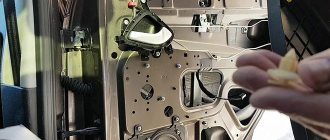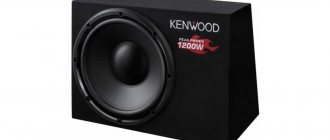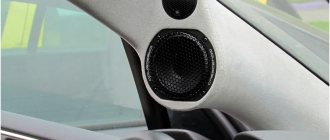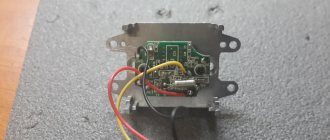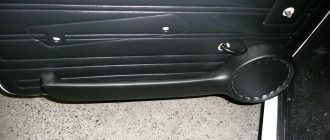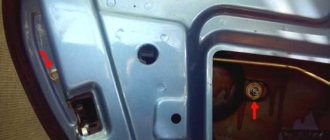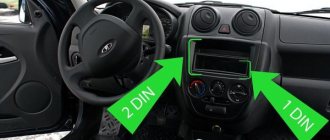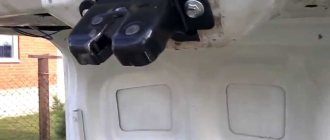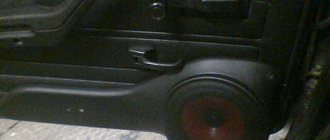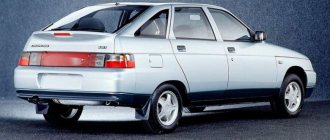Often, many car enthusiasts are not satisfied with the sound of the standard audio system installed in their cars. And, of course, I want to replace it. The market is overcrowded with a range of products in this category, which naturally makes it difficult to choose a high-quality sounding speaker system.
Speaker
How to choose the right audio system without additional costs and installation problems?
Types of acoustics
To create high-quality sound in the car, three types of acoustic elements are used:
- High-frequency speakers - tweeters. These are small “tweeters” that are capable of reproducing only high frequencies - from 5 to 20 thousand hertz. They are best used in the front part of the car, for example, on the A-pillars. In tweeters, the membrane is rigid because sound vibrations do not travel a long distance from the center of the speaker;
- Coaxial acoustics – also called coaxial. Its peculiarity lies in the fact that such acoustics belong to the category of a universal solution. Such speakers have both high- and low-frequency drivers in one housing. The result is loud, but the quality is noticeably lower if the motorist creates component acoustics;
- Low frequency speakers - subwoofer. Such devices are capable of transmitting sounds with a frequency of 10 to 200 Hz. If you use a separate high- and low-frequency speaker through a crossover, the sound of the composition is much clearer, and the bass does not mix with the high frequencies. For a bass speaker to work, a soft membrane is required and, accordingly, a large size so that it works in swing.
Fans of high-quality car audio are converting broadband acoustics (standard sound that comes with the car from the factory) to component ones. The second option will require an additional crossover.
However, no matter how high-quality the acoustics are, if you do not properly prepare the place for its installation, the sound quality will not differ much from standard loud wideband speakers.
Connect the amplifier to the car
To properly organize sound in a car, you first need to understand the types of subwoofers, amplifiers and the location of speakers, and then choose the correct connection diagram and correctly lay out the speaker wiring. Stories from our readers “Fucking basin!!! Otherwise, it becomes necessary to treat the inner surface of the interior door trim, the inner surface of all plastic parts, the inner surface of the ceiling, the roof of the body, and pour damping liquid into the mirror with vibration-damping materials. Speaker bands - speakers, acoustic system, acoustics - the number of speakers in the acoustics, which each reproduce their own frequencies.
Accordingly, it is physically unsuitable for wires. The simplest design with no air holes.
A significant portion of high and bass frequencies are not transmitted, and the natural overtones of musical instruments are lost. All amplifiers are designed to operate with a certain load impedance.
The amplifier may have a certain class: AB and D. The wires going to the speaker systems should not be parallel to the power cables.
It turns out that the influence of the door on the performance of the midbass can be neglected, and the speakers should be chosen from some well-known company - the more expensive, the better. If it does not decrease, but increases, then the polarity of connecting one of the speakers is not correct.
A two-coil subwoofer, as well as two, three or more subwoofers, can be connected in four ways: each coil separately, parallel connection of coils, serial and combined
When connecting from a radio, there is no point in selecting speakers based on power. In principle, there is nothing complicated about this, but due to ignorance or in a hurry, you can make an incorrect connection, at best the system will not sound right, and at worst, failure of a component or the entire system. Typical car audio system circuits: two-way (two-way audio system)
What does car acoustics consist of?
A car speaker system may include a large number of components that need to be connected correctly in order to enjoy the purity of musical compositions. For many motorists, the acoustics in a car mean a car radio and a couple of speakers.
It's actually just a sound-producing device. Real acoustics require the correct selection of equipment, installation location and compliance with sound insulation requirements. The sound quality of expensive equipment depends on all this.
Here are the key elements that make up effective car audio.
Crossover (pass filter)
As the name suggests, this device is designed to split an audio stream into different frequencies. Externally, the crossover is a box with various electrical parts soldered on a board.
This device is installed between the amplifier and speakers. There are passive and active crossovers. Each of them has its own advantages and disadvantages, and they have different frequency separation effects.
2. Amplifier
This is another device that looks like a box installed between the car radio and the speakers. It is designed to amplify the sound signal. But if a motorist is not a music lover, and he needs a radio to create a general background in the car, then buying an amplifier is a waste of money.
An amplifier makes the sound more powerful, cleaner and better quality. This device is for those for whom not just the music is important, but its purity - so that he can clearly recognize the sound of a vinyl recording.
Before buying an amplifier, you need to correctly calculate its power (it must correspond to the capabilities of the speakers and the size of the car interior). If the car has weak speakers, then installing an amplifier will only lead to a rupture of the diffuser. The power of the amplifier is calculated based on the power of the speakers (or subwoofer). Its maximum should be 10-15 percent less compared to the peak power of the speakers.
In addition to power (the effect of this device will be if this parameter is at least 100 watts), you need to pay attention to the following parameters:
- Frequency range. It should be at least 30-20 thousand Hertz.
- Background level is within 96-98 dB. This indicator minimizes the noise level between tracks.
- Number of channels. Particular attention should be paid to the connection diagram of the acoustics with the subwoofer. It would be nice if the amplifier had a separate channel for it.
